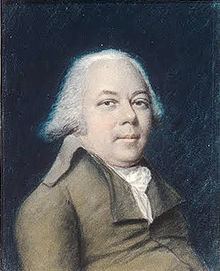Name Mederic Elie | Role Lawyer | |
 | ||
Books American Journey, A Civilization that Perished: The Last Years of White Colonial Rule in Haiti | ||
Médéric Louis Élie Moreau de Saint-Méry (13 January 1750 – 28 January 1819) son of Bertrand-Médéric and Marie-Rose Moreau de Saint-Méry was born in Fort-Royale, Martinique He was a lawyer and writer with a career in public office in France, Martinique, and Saint-Domingue (now the Republic of Haiti). He is best known for his publications on Saint Domingue and Martinique. He married into a well-positioned family which allowed him to expand his connections among french people and with time positioned him as a member of the Parliament of France. Moreau was deeply involved in the founding of the Museum of France which he was later appointed president of in 1787
Contents
Education and Influences
Although he did not come from a family of significant means, Moreau used the inheritance he received from his grandfather to study law in Paris. There, he argued that colonial law, drafted in France, was not fitting for the realities of the French Caribbean. He owned black people, enslaving them to toil, and a freemason and a member of the Cercle des Philadelphes — a colonial scientific society — and sought to document life in the colonies. He was influenced by the scientific projects of the Enlightenment.
Writings
Moreau produced in-depth studies of the colonies only years before St-Domingue’s revolution. As such, he spent time traveling in the Caribbean and returning to France to write and lobby until his involvement with the French Revolution led to the issuing of a warrant for his arrest. His most notable work, Description topographique, physique, civile, politique et historique de la partie française de l’isle Saint-Domingue, which he wrote in 1789, has not been translated into English. This work develops an arithmetic theory of skin color and the epidermis for the French colony of Saint-Domingue (now Haiti). It hierarchizes a possible one hundred and twenty-eight possible combinations of black-white miscegenation into nine categories (the sacatra, the griffe, the marabout, the mulâtre, the quarteron, the métis, the mamelouk, the quarteronné, and the sang-melé). His work reflects a preoccupation of white colonists on racializing those who intermarry and interbreed with slaves or free gens de colour, establishing the caste of white colonists as l'aristocratie de l’épiderme.
Politics
A well-educated slave owner, he rejected the principle of the Natural Rights of Man in order to defend legal slavery and segregation on the basis of race. In his roles in the French parliament and on the colonial Governing Boards, he sought to maintain an economic system based on slave labor. To this end, he pursued the rights of colonists — mostly white planters — and sought a degree of self-determination for the French Caribbean.
Moreau in the United States
Moreau escaped Paris after a warrant for his arrest was placed in 1794. He relocated to Philadelphia after a short stay in New York, leaving all his research on the Colony of Saint-Dominique behind, which he later was able to recover. In Philadelphia, he opened a bookstore in which he sold books and prints in many languages, as well as maps and music. The bookstore located at Fort and Walnut became the meeting location for many other French exiles. Moreau became a member of the American Philosophical soceitey in 1789, to which he was committed and introduced many of his emigres friends into the Society as well. Moreau had to escape back to Paris in 1789 escaping the Alien Bill imposed by the american president at the time, John Adams.
